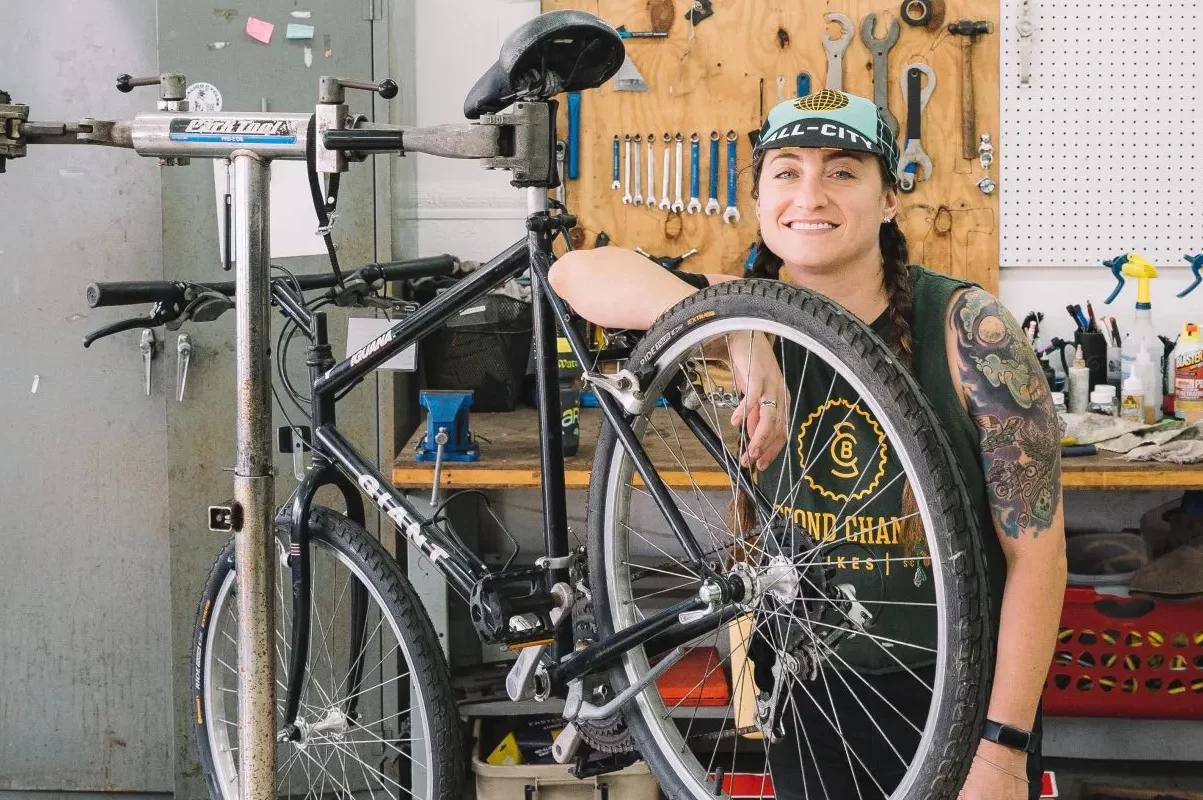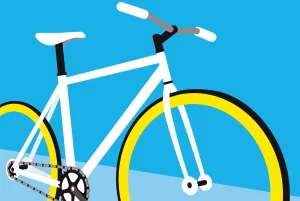
By Samantha Connors | Every time you see a white-painted bike on the side of the road, you might want to take a moment to remember the person who died there.
There are too many of those white remembrances, representing how South Carolina is the second riskiest state in which to ride a bike, according to a 2021 study by Streetlight Data. In 2020, South Carolina had the second-highest pedestrian fatality rate per 100,000 people, according to the National Highway Traffic Safety Administration.
As a relatively small city with year-round moderate weather, Charleston should be an ideal place for cyclists and pedestrians. But the reality is bleak.
“Charleston County is consistently the most dangerous in the state for bike/ped users, and the tri-county area tends to be towards the top,” said Katie Zimmerman, executive director of Charleston Moves, a nonprofit advocating for more mobility access.
The state Department of Public Safety collects figures from law enforcement agencies on bike and pedestrian collisions. The 2021 data show that of 433 bike collisions reported statewide, 171 happened in Berkeley, Charleston and Dorchester counties — representing nearly 40% of all collisions in the state.
“The main issue is our infrastructure is not designed in a way that is complete. Our streets and bridges … really prioritize vehicles and encourage speeding, frankly, over human beings,” Zimmerman said. “Because of that, we have a lot of interactions on a daily basis that are really dangerous because you’ve got these different types of users, some more vulnerable than others, who are using this infrastructure that does not work properly for multiple modes [of transport].”
A first for South Carolina

At a state level, SCDOT produced in 2022 the state’s first Pedestrian and Bicycle Safety Action Plan. Over the last several years, SCDOT has also conducted road safety audits, which Mathis said have resulted in recommendations for improvements, including a possible two-way cycle track downtown in Charleston on St. Philip Street from Calhoun to Beaufain streets.
Though local and state governments are making efforts to support multiple modes of transportation, many cyclists and advocates say comprehensive infrastructure is needed in addition to non-infrastructure improvements.
“I think one of the biggest failures of SCDOT and municipal governments here is that they don’t take care of the existing bike lanes, and people are using them,” said Sylvie Baele, executive director of Second Chance Bikes in North Charleston. “Probably more people would use them if they weren’t covered in debris and sand. … That’s something I would really like to see in tandem with more infrastructure.”
Other riders advocate for more widespread cycling education from sources including the Department of Motor Vehicles, city and county outreach, advocacy organizations and more.
“I think driver training and testing is a glaring omission,” said Phil Whirley, treasurer of Coastal Cycling club. “There is very little discussion of what to do with cyclists and pedestrians on the road. There’s a little bit, but not very much at all.”
Baele echoed these sentiments: “I think [cycling and pedestrian safety] needs more focus on the driving exam. … The DMV would be a good place to educate people.”
More education could help alleviate confusion drivers may feel about how to act near cyclists or pedestrians. Advocates say greater understanding and communication as well as more people riding could improve tension between cyclists and drivers.
Poor relationship
A new study from a law firm ranked South Carolina as the state with the 6th worst relationship between riders and drivers.
“I tell people … the most powerful thing they can do is ride a bike. If you want to make a difference, be the difference. Be out there on your bicycle,” Whirley said.
Baele added, “There’s really something about being in a metal box that makes it harder to view other people as human. It’s a lot harder to feel empathy for someone when you are in a vehicle and they are on a bike, despite the fact that you are in the position of power.”
Founder and CEO of national organization Equitable Cities Charles Brown said it’s essential to include marginalized groups in discussions of new bike infrastructure. “Black and brown communities, low income communities historically are not actively engaged in those processes,” he said.
“Local governments can do a better job by way of outreach and engagement to those communities to mitigate fears around infrastructure.”
Brown also pointed out that in “before” and “after” renderings of proposed new infrastructure, Black people are often missing from the “after” renderings.
“What is happening, intentionally or not, engineers and planners are sending a signal to Black and brown communities that you will not be present once that infrastructure comes,” he said.
Recognition of and opposition to this kind of disenfranchisement is an essential part of creating more equitable bike infrastructure everyone can enjoy. But increasing bike equity involves not only access to infrastructure but also bikes and safety accessories.
Samantha Connors is managing editor of the Charleston City Paper, where a version of this story first appeared. Have a comment? Send to: feedback@charlestoncitypaper.com















 We Can Do Better, South Carolina!
We Can Do Better, South Carolina!